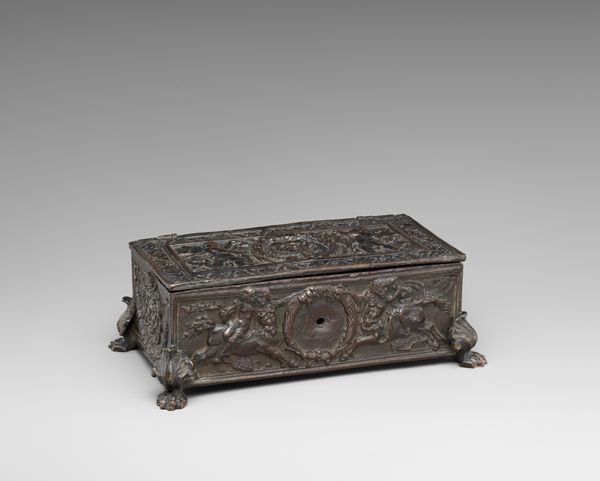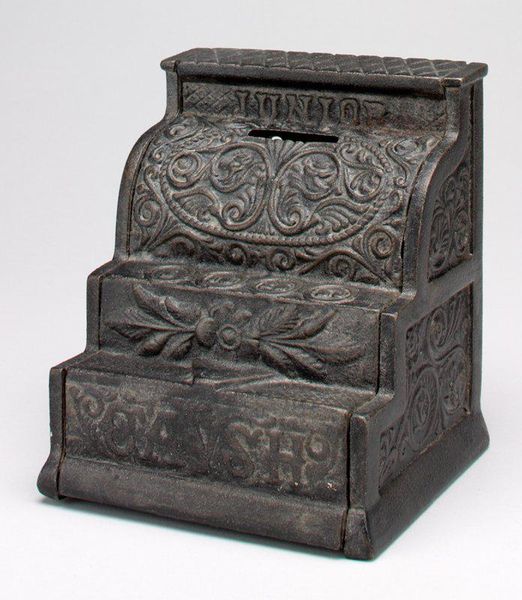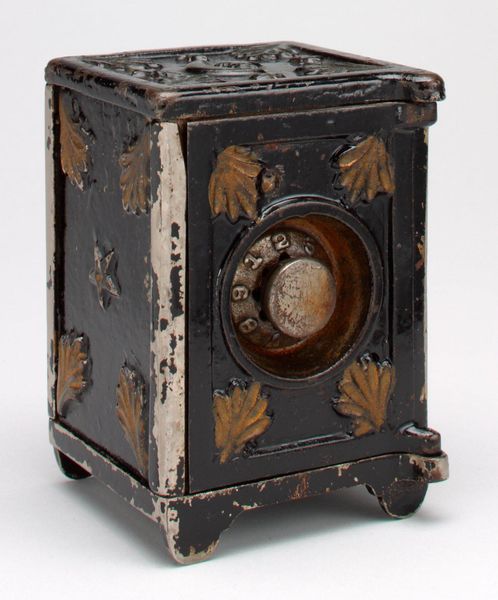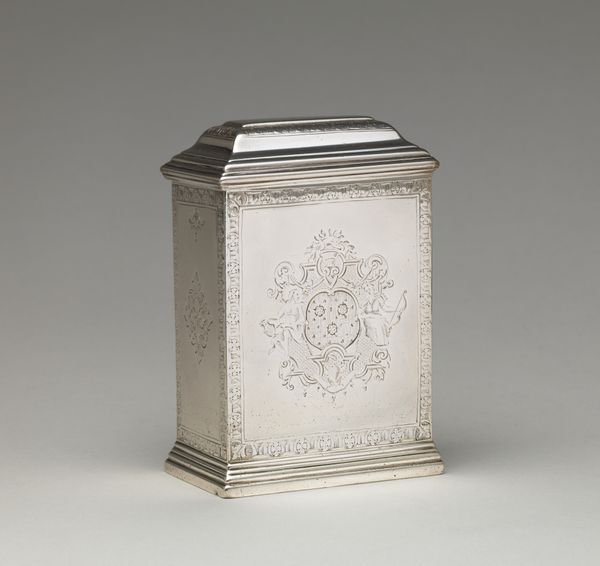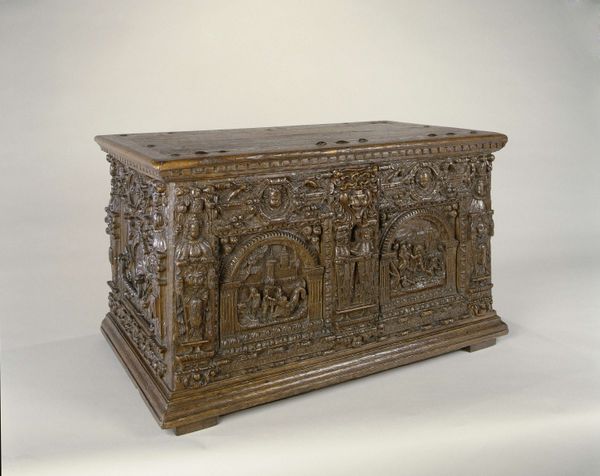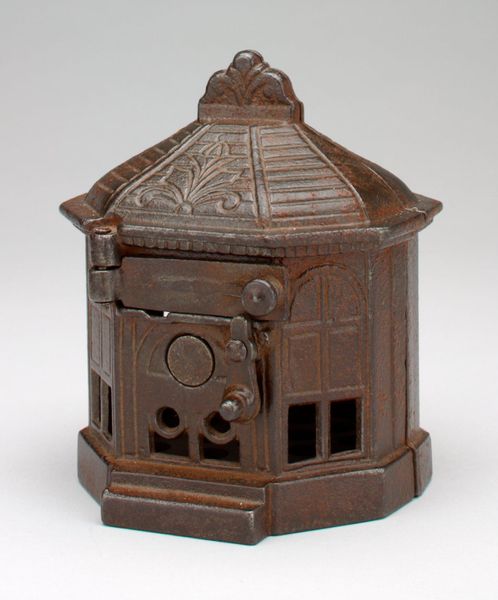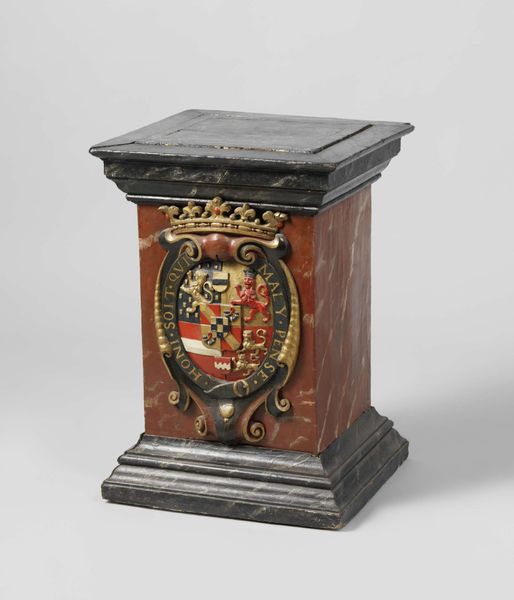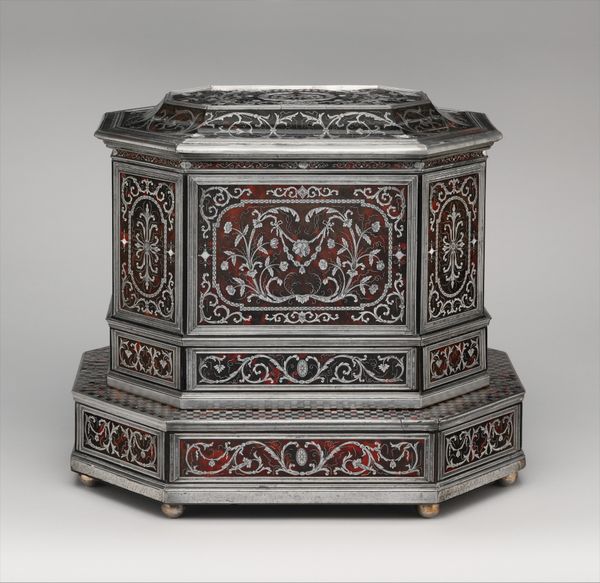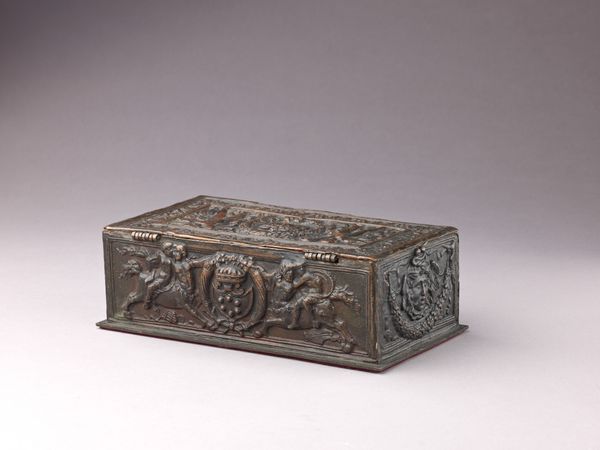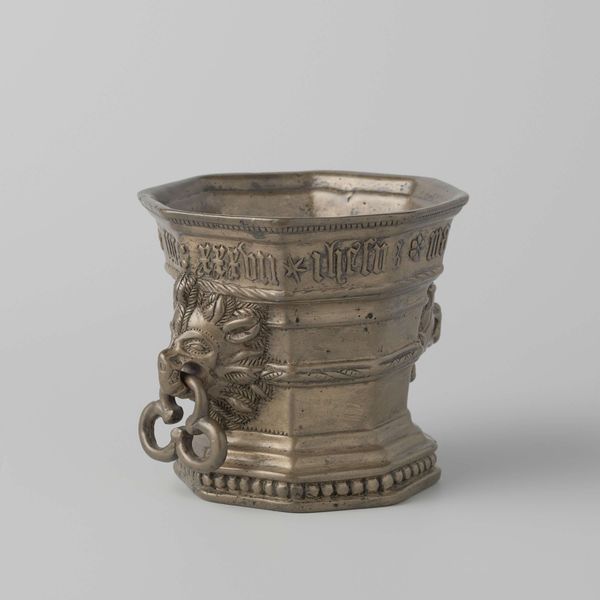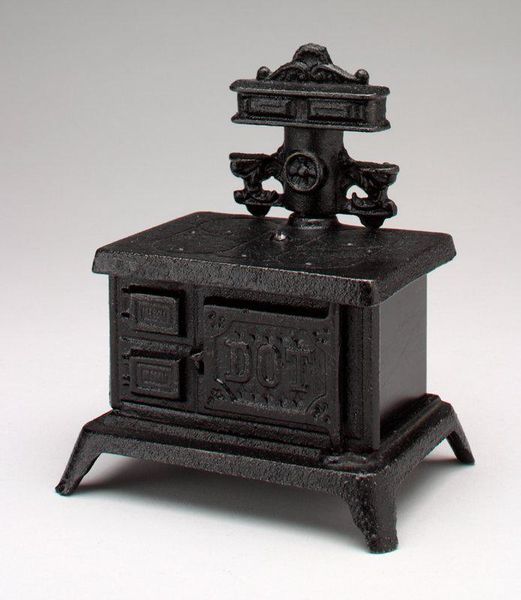
metal, sculpture
#
medieval
#
metal
#
sculpture
#
figuration
#
form
#
sculpture
#
decorative-art
Copyright: Rijks Museum: Open Domain
Editor: Here we have “Navigation,” a metal sculpture from around 1590 to 1596, made by an anonymous artist and displayed here at the Rijksmuseum. It looks almost like a treasure chest in miniature. What stands out to you about it? Curator: Immediately striking is the artist’s engagement with form and surface. Note how the cube of the chest contrasts with the circular lid. Consider too, the treatment of the metal itself: the rough texture, the deliberately imperfect castings which introduce shadow and play of light across the object. Does this perhaps evoke the uneven nature of life at sea? Editor: It's interesting you focus on the play of light and shadow. The craftsmanship, although seemingly simple, reveals intricate patterns when viewed closely. Are these symmetrical arrangements purely decorative? Curator: Symmetry certainly plays a role, establishing a formal structure. Yet, the asymmetry introduced by the artist’s handling of the metal generates a dynamic tension. The material's intrinsic qualities resist perfect symmetry. Observe the placement of these decorative motifs: how they guide the eye around the sculpture, emphasizing its three-dimensional nature. Editor: I see that now! I initially saw it just as decoration, but it also brings this sort of controlled chaos to the design. Do you think the artist intended to capture this chaos? Curator: Intent is often elusive, but the effects are undeniably present. By engaging the materiality, surface, and form of the object itself, the work generates tension and vitality. Its success is through visual organization rather than the narrative value of such content. Consider it as a study in contrasts, a material experiment, if you will. Editor: Thanks. Looking at the interplay between the formal and imperfect design helps me think about medieval art in a completely different light! Curator: Indeed, a close reading of artistic choices through line, shape and design can broaden our interpretation.
Comments
rijksmuseum about 2 years ago
⋮
To determine the ship’s position and chart its course, the captain had an entire arsenal of instruments at his disposal. Among the items found on Nova Zembla are an astrolabium catholicum (universal astrolabe), a fragment of a copper sounding line, a cross staff, a sextant and a chart compass.
Join the conversation
Join millions of artists and users on Artera today and experience the ultimate creative platform.
